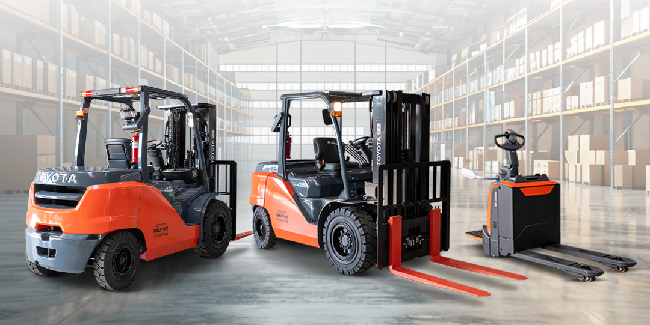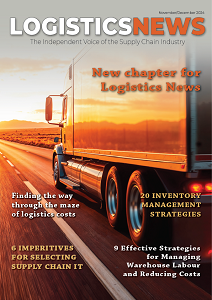Forklifts play a pivotal role in logistics and material handling. While forklifts increase operational efficiency, they also pose significant safety risks if not handled properly. Inadequate safety measures can lead to damage to goods, injuries to staff and, in severe cases, fatalities.
In South Africa, forklift operations are primarily governed by the Occupational Health and Safety Act (OHSA) (Act 85 of 1993) and associated regulations such as the General Machinery and Driven Machinery Regulations. These guidelines are designed to safeguard the health and safety of workers involved in material handling operations by reducing risks and preventing accidents associated with improper forklift use.
At Toyota Material Handling (a division of CFAO Equipment), forklift safety is more than just a matter of compliance – it is a core commitment to protecting both employees and operational continuity.
How technology enhances forklift safety
Jenna Botterill, Toyota Material Handling Corporate Sales Executive, says while traditional safety measures such as operator training and wearing personal protective equipment (PPE) are important, technology has significantly enhanced forklift safety. “One of the most ground-breaking innovations in this field is Toyota’s System of Active Stability™ (SAS), which is instrumental in preventing accidents such as forklift tip-overs, one of the most common causes of major injury in forklift accidents.”
The patented SAS technology actively monitors and controls a forklift’s stability using advanced sensors and an on-board controller. This system, which is featured on all Toyota material handling equipment, significantly improves load-handling performance and prevents accidents by intervening when a forklift is at risk of becoming unstable.
What sets the SAS (System of Active Stability) apart are its two core safety features: the Active Control Rear Stabiliser and the Active Mast Function Controller. Working in tandem, these systems enhance lateral stability during turns and help prevent tip-overs, particularly when handling heavy or unbalanced loads.
For example, the Active Control Rear Stabiliser detects when the forklift’s rear axle is swinging too far to one side during a turn. If a dangerous situation is detected, the system locks the rear axle to stabilise the forklift, thereby preventing a tip-over.
Another key safety feature of SAS is the Active Mast Function Controller. This system ensures that the mast angle adjusts automatically to match the lift height and load weight, preventing dangerous forward or backward tipping. Additionally, the system controls mast tilt speed to avoid load spills during operation, further enhancing the stability of the forklift.
Overcome human error with operator training
While advanced safety technology plays a significant role in forklift safety, human error also contributes significantly to forklift-related accidents, making thorough operator training essential. Training should cover not only the technical aspects of operating a forklift, but also the safe practices required to reduce the risk of accidents.
Botterill says CFAO Equipment has become a trusted partner for operator training nationally, establishing an accredited Training Academy with fully equipped training facilities in each major region across South Africa. “We conduct theoretical classroom-based training, practical workshop training, instructor-led virtual training sessions and e-learning to ensure the operators can handle forklifts safely and efficiently.”
Operators are also supported by forklift safety features such as the Operator Presence Sensing System (OPS). The system ensures that the forklift cannot operate unless the operator is properly seated at the controls. If the operator leaves the seat, the system automatically disables the forklift’s ability to lower forks or tilt the mast, preventing unintentional movements that could cause injury or damage.
Another invaluable safety feature is the Blue Light, which projects a blue beam of light onto the ground to alert pedestrians of a forklift’s presence. This simple yet effective system helps prevent accidents by making forklift movements more visible to those around the machine.
As South Africa’s logistics market continues to expand, the need for safe material handling practices will only increase. “Investing in the latest technology and appropriate training bodes well for the wellbeing of workers, the longevity of the equipment and the overall success of the business,” concludes Botterill.

.png)


